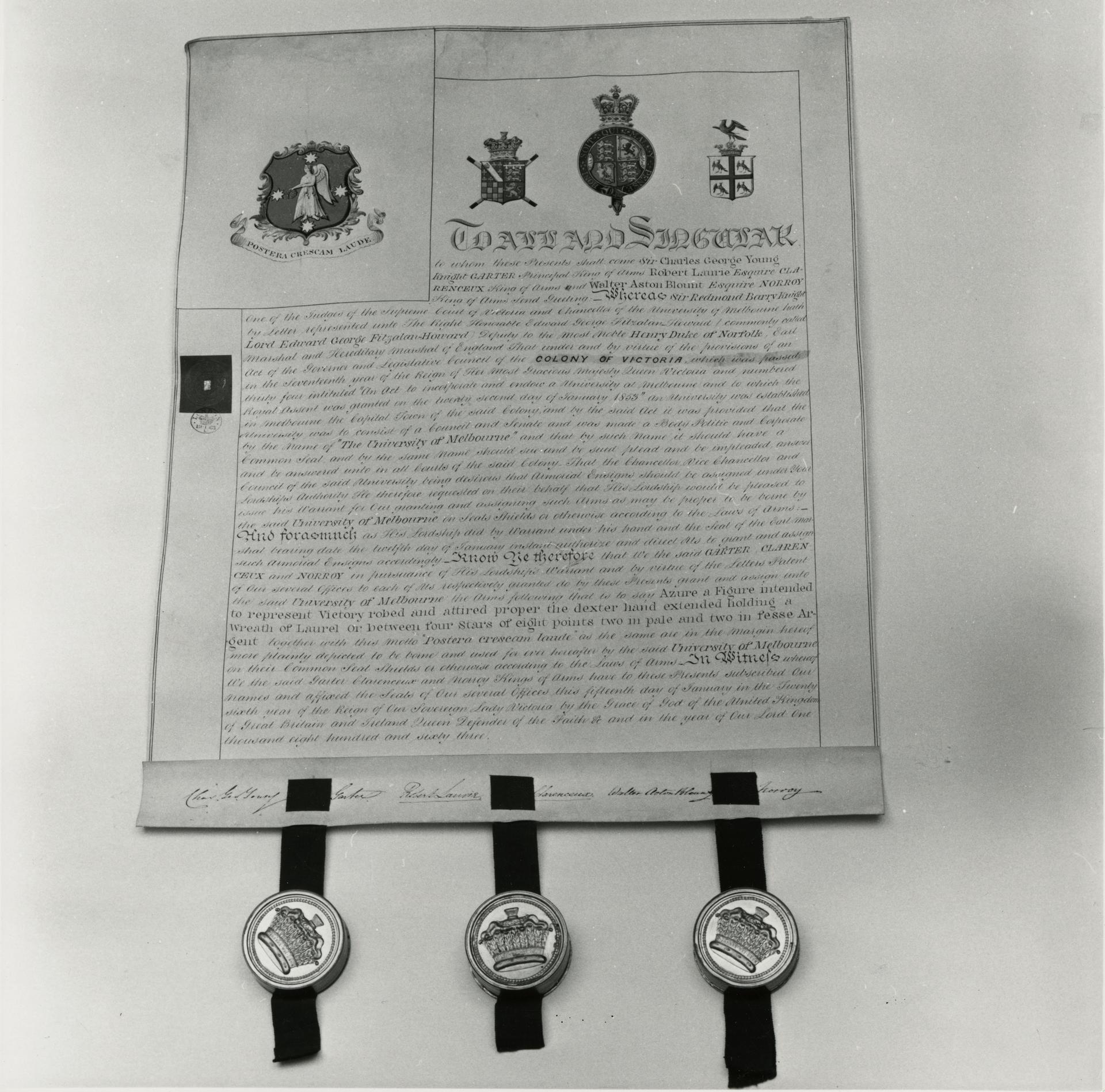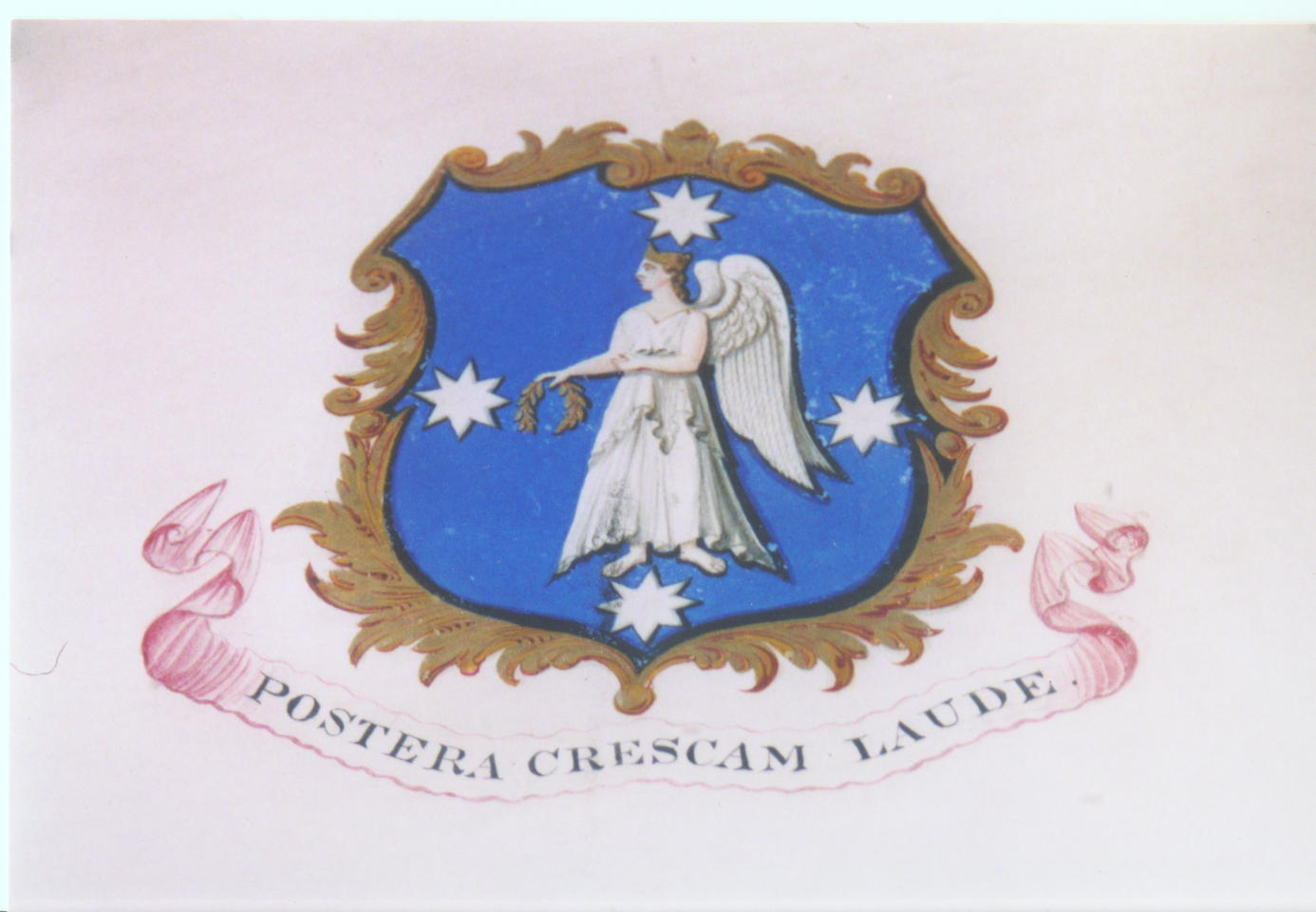Key 4: The University Seal 1855/Grant of Arms by the College 1863/Letters Patent 1859/Ceremonial Mace 1965

[Source: University of Melbourne Archives Image Catalogue, UMA-I-1681]
Very early in its deliberations the University Council considered various designs for an official seal. In 1854 it reluctantly adopted the 'isometric view, drawn by Mr White (the University Architect) of the proposed university buildings'. This was used on the earliest diplomas and blocked on many official book covers, but in 1855 the artist Ludwig Becker submitted a new design much more to the Council’s liking. The sum of £55 was voted for its preparation.
The Council then turned its attention to obtaining the Coat of Arms or armorial bearings. At the time such insignia were commonly adopted as distinguishing devices denoting particular corporate bodies as well as families, kingdoms and like entities. They could only be granted by the College of Heralds in London. On 15 January 1863 the Council received the parchment on which was painted the armorial device in the form of a female figure on an azure background which today is still familiarly associated with all official University documents.

[Source: University of Melbourne]
It was, in the archaic language of the College, 'intended to represent Victory robed and attired proper the dexter hand extended holding a wreath of Laurel or between four stars of eight points two in pale and two in fess argent' and has been the insignia of the University ever since. Its precise representation has varied over time (for example, in the augmentation and regrouping of the stars as the Southern Cross). The similarity to Becker's design for the University Seal has convinced some that it formed the basis for that design also. The winged figure, set in stars and holding a laurel wreath in her right hand, is most commonly suspended above the motto adopted in 1854, Postera crescam laude - 'I shall grow in the esteem of future generations'. The figure, borrowed from the Greek Victory of peace and virtue, may also, as the Latin Victoria, be directly identified with both the colony in which the University was established and the Queen for whom the colony was named.
If the University were to have appropriate status and attract students who might otherwise leave the colony to pursue their studies it was essential that its degrees be internationally recognised. One of Hugh Childers' last tasks on behalf of the University was to pursue personally in England the grant of Letters Patent under the Great Seal in 1859 which recognised that degrees granted by the University of Melbourne were entitled to rank, precedence and consideration throughout the British Empire 'as fully as if the said degrees had been granted to such persons as by any University of the United Kingdom'.

[Source: University of Melbourne Archives Image Catalogue, UMA-I-1680]
Not until 1966 did the University acquire a ceremonial mace, designed by Stuart Devlin in 1965, and presented by Aubrey Gibson.